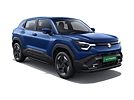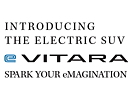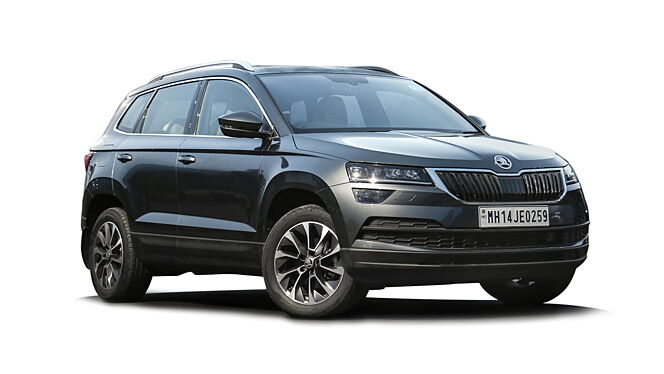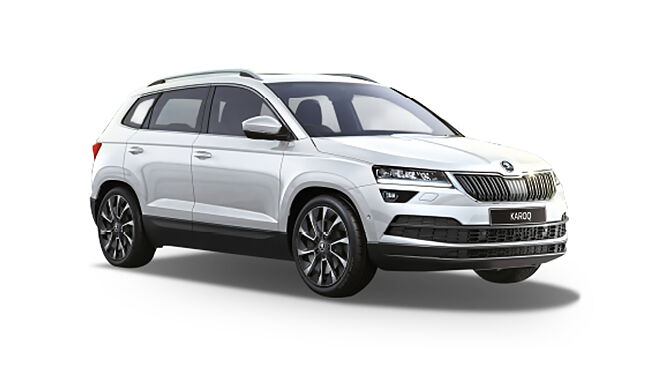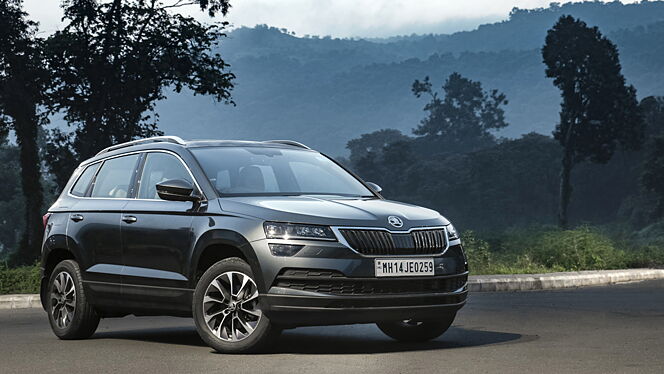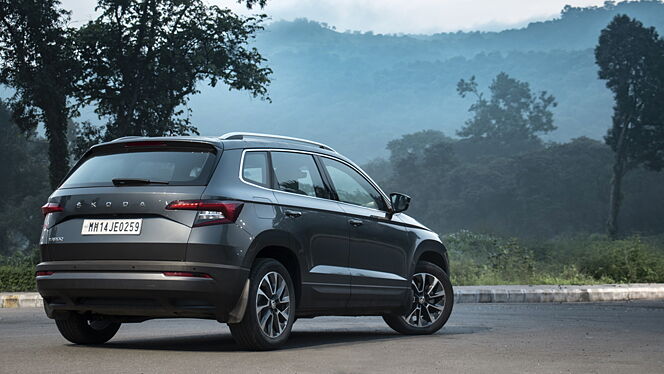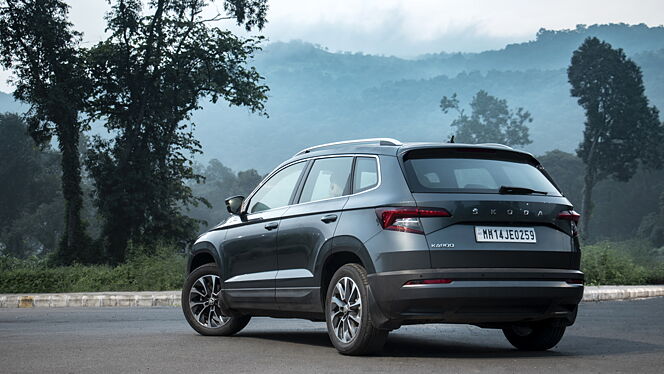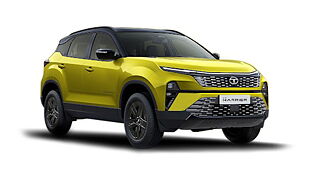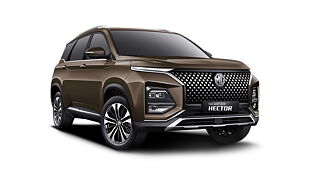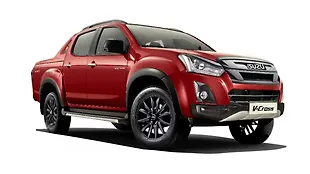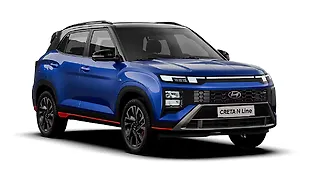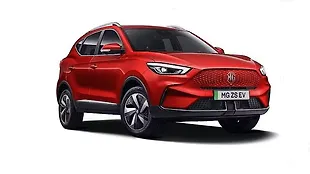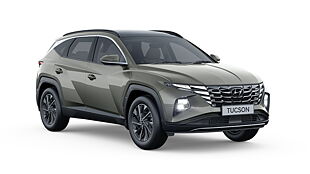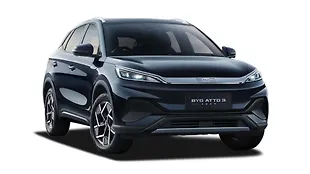Skoda Karoq 1.5 TSI
|Rate & Win
Skoda Karoq 1.5 TSI Summary
Skoda Karoq 1.5 TSI is the top model in the Karoq lineup and the price of Karoq top model is Rs. 24.99 Lakh. It gives a mileage of 14.49 kmpl. Skoda Karoq 1.5 TSI is available in Automatic (DCT) transmission and offered in 6 colours: Magic Black, Magnetic Brown, Lava Blue, Quartz Grey, Brilliant Silver and Candy White.
Read More
Skoda Karoq 1.5 TSI Review
The Karoq is appreciated for its fine amalgamation of nippy performance and sure-footed dynamics despite being a mid-sized SUV. Your senses are instantly pampered by the relaxing feature-loaded cabin, the pristine fit and finish, solid build quality, and the secure feeling that stems from the long list of safety equipment. By contrast, the only significant deterrent that eclipses this otherwise tempting package is the steep price which simply drops it out of any equation.
Engine and Performance
Interior Space and Quality
Features and Entertainment
Safety
Conclusion
Karoq 1.5 TSI Specifications & Features
- Specifications
- Features
- Specifications
- Features
Specifications
Engine & Transmission
Engine1498 cc, 4 Cylinders Inline, 4 Valves/Cylinder, DOHCEngine Type1.5 TSI with ACTFuel TypePetrolMax Power (bhp@rpm)148 bhp @ 5000 rpmMax Torque (Nm@rpm)250 Nm @ 1500 rpmMileage (ARAI)14.49 kmplDriving Range724.5 kmDrivetrainFWDTransmissionAutomatic (DCT) - 7 Gears, Manual Override & Paddle Shift, Sport ModeEmission StandardBS 6Turbocharger / SuperchargerTurbochargedValve/Cylinder (Configuration)4, DOHCDimensions & Weight
Length4382 mmWidth1841 mmHeight1624 mmWheelbase2638 mmKerb Weight1320 kgCapacity
Suspensions, Brakes, Steering & Tyres
Features
Exterior
Braking & Traction
Safety
Comfort & Convenience
Lighting
Locks & Security
Doors, Windows, Mirrors & Wipers
Entertainment, Information & Communication
Mobile App Features
Storage
Airbags
Seats & Upholstery
Instrumentation
Manufacturer Warranty
Other Karoq Variants
| Variants | Price | Specifications | |
|---|---|---|---|
Rs. 24.99 Lakh | 5 Person, FWD, 250 Nm, 1320 kg, 521 litres, 7 Gears, 1.5 TSI with ACT, Panoramic, 50 litres, 724.5 km, No, No, Front & Rear, 4382 mm, 1841 mm, 1624 mm, 2638 mm, 250 Nm @ 1500 rpm, 148 bhp @ 5000 rpm, Keyless, Yes (Automatic Dual Zone), Front & Rear, 1, Reverse Camera with Guidance, Wired, Wired, 1, Yes, Yes, No, 9 Airbags (Driver, Front Passenger, 2 Curtain, Driver Knee, Driver Side, Front Passenger Side, 2 Rear Passenger Side), Yes, 1, BS 6, 5 Doors, 14.49 kmpl, Petrol, Automatic (DCT), 148 bhp | Get Offers from Dealers |
Karoq Alternatives
Explore Used Skoda Karoq
Karoq 1.5 TSI Colours
The following 6 colors are available in Karoq 1.5 TSI.
Magic Black
Write a detailed review and you can win Amazon voucher worth Rs. 2,000
Skoda Karoq 1.5 TSI Reviews
- (20 Ratings) 14 Reviews
4.0/5
- CBU SKODA IS WAY BETTER THAN THE RIVALS1. LOVED THE BUYING EXPERIENCE AS THE SHOWROOM GUYS WERE AMAZING THEY HELPED ME UPTO DELIVERY. 2. ITS GLIDES LIKE BUTTER ON SMOOTH ROADS. 3. LOOKS LIKE MINI KODIAQ.IT FEELS LIKE A LUXURY CAR AND A SEGMENT ABOVE FROM RIVALS AND ENDEAVOUR'S SEGMENT CARS TOO. 4. MY SERVICE EXPERIENCE WAS ALSO VERY GOOD AND SINCE IT'S A SKODA MAINTENANCE WILL BE SLIGHTLY PREMIUM BUT THE PREMIUM WHICH YOU WILL GIVE FOR IT WILL NOT GET YOU THINK AS YOUR MONEY GOT WASTED IN INVESTING ON THIS CAR. 5. IT HAS VERY GOOD FEATURES SOME LIKE OF VOLVO. TRUE FAMILY CAR.BEST FOR 4 ADULTS AND A CHILD. AS COMPARED WITH RIVALS IT HAS GOT BEST OF EVERYTHING. 1.5TSI IS FRUGAL. TRUE BEAST.Rating parameters(out of 5)5
Exterior
5Comfort
5Performance
4Fuel Economy
5Value For Money
About the ReviewerPurchase NewDriven forFew thousand kilometersWas this review helpful?00 - Smoothest SUV in the IndiaBuying is a hard lot of money company price and Driving mode is the superb car looks is the big boy in the cars and performance is very very good in SUV car main using this car family to wear very nice performance maintenance using to smooth giving power and good mileage this car was the lovely car I loved Soo much this car Skoda top carRating parameters(out of 5)5
Exterior
5Comfort
5Performance
5Fuel Economy
5Value For Money
About the ReviewerPurchase Not PurchasedDriven forFew thousand kilometersWas this review helpful?00 - A surreal driveIt's a wonderful machine. It's driving experience is great and manoeuvrability amazing for its size. It's quiet, with ample power, the gearbox is smooth, spacious, loaded with safety features and built quality is premium. Average so far hasn't been great, it's been giving about 10km/ l in mountains. And yes, it's a leap of faith as far as after-sale service is concerned, hopefully, they will live up to the renewed promise of efficient after-sale care. For someone looking for road presence, it may not appear very imposing.Rating parameters(out of 5)4
Exterior
5Comfort
5Performance
3Fuel Economy
4Value For Money
About the ReviewerPurchase NewDriven forFew hundred kilometersWas this review helpful?40
Karoq 1.5 TSI FAQs
Q: What is the price of Karoq 1.5 TSI?
Karoq 1.5 TSI price is Rs. 24.99 Lakh.
Q: How is the performance of Karoq 1.5 TSI?
1.5 TSI is powered by a 1498 cc Petrol engine mated to a 7 Gears, Manual Override & Paddle Shift, Sport Mode speed Automatic (DCT) gearbox which generates 148 bhp of power & 250 Nm of torque.
Q: What is the mileage of Karoq 1.5 TSI?
The Karoq 1.5 TSI mileage is 14.49 kmpl.
Q: What is the fuel tank capacity of Karoq 1.5 TSI?
The fuel tank capacity of Karoq 1.5 TSI is 50 litres.
Q: How much bootspace does Karoq offer?
Skoda Karoq boot space is 521 litres.
- Home
- Skoda Cars
- Karoq
- 1.5 TSI

